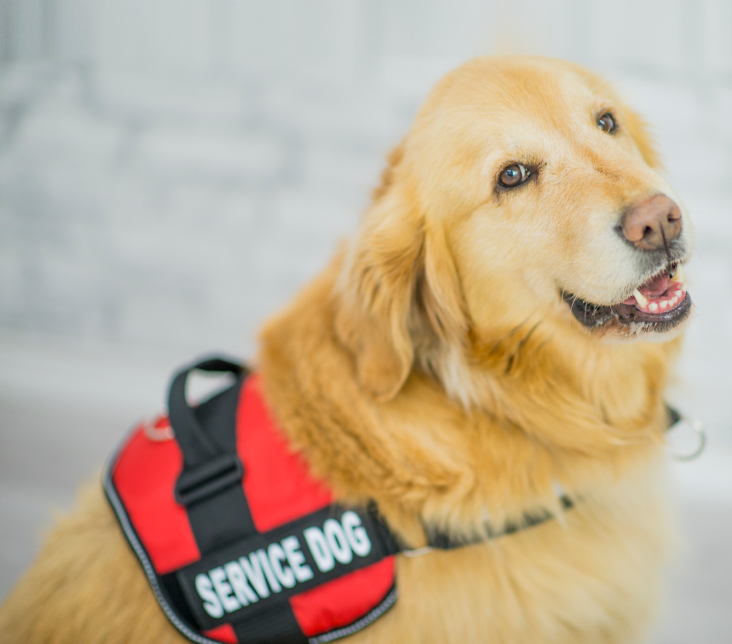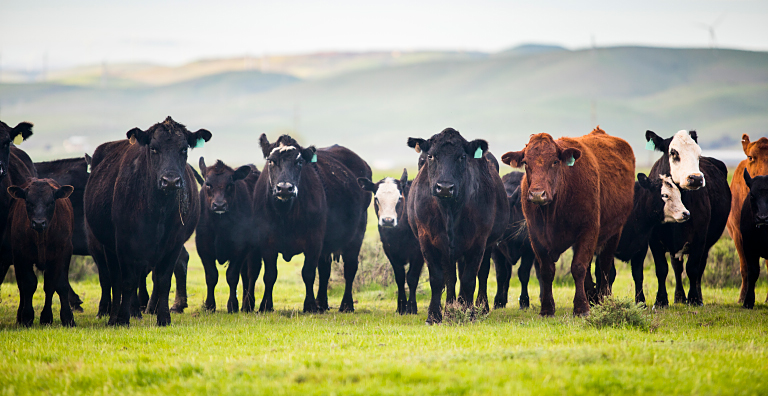Animal Identification Powered by RFID Is Not Just for Livestock Management
With a value of $897 billion in 2021, the livestock industry is a gargantuan global enterprise. Not only does it directly contribute to feeding a majority of people on the planet, but it is responsible for hundreds of thousands, perhaps millions, of jobs. However, there are many factors that can severely impact this industry such as disease to theft.
Keeping that in mind, the need for a reliable, robust and scalable solution for tracking livestock is vital to the entire industry’s survival.
According to the United States Department of Agriculture, the US livestock industry alone has reached staggering heights, including:
- US cattle and calve head number approximately 98.8 million in August 2022
- US milk production reached an all-time high of approximately 645 million pounds in April of 2021
- US wool production reached 23 million pounds in 2021/21
- US agricultural exports — including livestock-related products — have reached an astronomical $177 billion!
Identifying, tracking and managing animals like cattle and sheep is a monumental task regardless of how the agricultural industry facilitates that effort.
Animal Identification, or Animal ID for short, covers a broad range of industries and use cases — not just livestock.
Let’s look at how RFID-enabled Animal ID can apply to various species and industries.
RFID-Enabled Animal ID for Livestock
Livestock, most notably cattle, make up the majority of the Animal ID business. With almost 100 million heads of cattle herded and processed in the United States alone each year, this market is ripe for implementing innovative technologies such as RFID tagging, which involves activities like:
- Collecting data
- Tracking and preventing disease
- Transporting animals to various markets
- Complying with state and federal regulations
- Preventing theft
- Reducing stress on the animals
In the last instance, HID’s RAIN RFID Ultra-High Frequency (UHF) style tag with a long read range — up to several meters — is a highly-effective option.
Cattle tagged with a RAIN RFID tag can be easily counted en masse as they pass through a gate equipped with a large-scale reader — negating the need for hand-held readers to scan each animal and reducing the stress on the animals.
Tracking RFID-Enabled Migratory Fish for Conservation
As fish populations are overfished at unsustainable levels, both government policymakers and conservationists are seeking new ways to mitigate a pending collapse of this vital food source.
By safely tagging and releasing young migratory fish into rivers, when mature fish are later caught in the ocean their UHF tags will reveal something of their migration paths and the health of their environment.
HID’s newest and smallest tag, the Glass Tag Nano, is only 1.25 x 8.2 mm and is one of our standard products for Animal ID. The miniature dimensions with excellent size to performance ratio make this tag ideal for small animals like fish, as well as mice or other small pets.
Using detailed data provided by RFID technology, researchers hope to accurately ascertain current stock levels and future yields, so that governments can do what is required to support sustainable fishing that allows populations to recover and thrive.

Laboratory Mice and Data Collection
Small animals like mice have been a staple of medical research for hundreds of years. Tracking valuable metrics such as reactions to vaccines in development, skin conditions, blood clotting, and a host of other data has always been a laborious task for researchers. Yet data collection and analysis are a fundamental part of laboratory research.
However, in recent times, thanks to RFID technology, data collection from laboratory animals — predominantly mice — has reached a whole new level of efficiency and accuracy.
Some of the benefits of tagging mice in a lab include:
- Quick and simple insertion with a pre-assembled flexible tube called a cannula
- Improved biocompatibility with glass encapsulated tags and no adverse reactions
- Reduced stress on the animal
- Retrieval of animal ID and data collection is completely noninvasive and takes only a second
- Decreased occupational risk for the researcher from animal bites and scratches
- Permanent and unique non-repeating identification codes
- Reduced misreading and data entry errors inherent to other methods
- No requirement for battery charging or transmitting information
In 2019, animal testing reached an all-time global high in revenue at $10.74 billion, and the market is expected to grow at a compound annual growth rate (CAGR) of 4.27% between 2019 and 2025. The United States’ animal testing market was valued at $4.67 billion in 2019 alone. Regardless of the politics and ethical treatment of these animals, it is apparent that this market is not going away anytime soon. If RFID technology can make life a little easier for these creatures while helping to maximize ROI for the organizations that depend on them, then it is worth the investment.
NFC and Cloud-Based RFID Solutions for Pets
Some say that dogs and humans have the closest symbiotic relationship of any two species on the planet. We depend on dogs not just for our own comfort and well-being but for a host of essential tasks, including:
- Rescue dogs to locate missing individuals after a disaster
- Bomb and illegal drug sniffing dogs for high-traffic areas likes airports
- Guard dogs for personal and/or company property
- Service dogs for visually or aurally impaired individuals
- Bird dogs to help hunters retrieve downed foul
- Military dogs working with service men and women on deployment

For many of us domesticated pets are a staple of a happy home life, and pet owners will go to great lengths to ensure the continued health and safety of their furry friends. This can include tagging one’s dog or cat with an RFID tag.
Almost ubiquitously, dog breeders, shelters and veterinarian facilities embed a small glass RFID tag into a puppy or an adult dog that can be scanned with the proper reader. The same goes for cats. This tag usually contains a digital UID, or unique identification number, which is married to a record in a national dog-tracking database such as the American Kennel Club. The record for the dog will contain a wealth of information including the dog’s pedigree/lineage, medical information and, most importantly, its current owner’s contact information.
A drawback to this process is that when a lost dog is found, it must be taken to a vet in order for the tag to be read. Once that happens, the animal is surrendered to that facility and the chain of custody is broken.
However, new RFID technologies are already being used that allow anyone with a smart phone to read an RFID-enabled dog tag and get virtually the same information about the dog from the cloud — expediting the process of reuniting the dog with its owner.
Taganize, an HID partner company, has developed a Near Field Communication (NFC) protocol tag that works much like smartphone or smart watch does for contactless payments.
Taganize combines a stainless steel S-hook, an NFC tag with a patented ruggedized high-impact PA6 nylon casing and premium aluminum tag housing, and a cloud-based web application to create a smart dog tag which anyone can use.
This type of RFID solution provides not only an additional level of peace of mind for a dog owner but potentially could be a lifesaver for the dog itself. For example, medical information contained in the dog’s cloud-based UID could alert someone — including its owner — to a life-threatening condition that must be avoided or immediately treated.
Even the owner of Taganize, John Tengström, found himself in need of such information when his own dog was in distress.
It literally saved the life of my dog! – John Tengström, Owner and CEO, Taganize
From Livestock Management to Wildlife Conservation and Pet Passports
HID offers Animal IDs in sizes to fit any animal including livestock, fish, small mammals, cats, dogs and horses. For example, when tracking birds, small tags are embeddable in bird rings or bands.
When implanted subcutaneously, the transponders perform reliably over the long-term, minimizing the potential for errors or traumatic tag removal and replacement. This is ideal for a variety of situations including the EU’s pet passport that permits the travel of animals between EU member states without quarantine.
From stopping the spread of disease to conserving animal populations, RFID-enabled Animal ID is an invaluable tool for any animal-related industry. And with durable small form factors sporting best-in-class read range performance, HID’s animal identification transponders are a top choice for veterinary professionals.
For a deeper dive into HID’s Animal ID solution for migratory fish conservation, read our blog post, World Fish Migration Day — How UHF RFID Helps Scale Up Fish Counts to Tackle Seafood Sustainability >>
Nick Iandolo is an experienced Senior Marketing Strategist specializing in Content Marketing and Corporate Communications Writing, primarily for market-disrupting technology organizations. His work has been featured in publications such as Morning Consult, NewDesign Magazine UK, SmartCard Identity News, and Construction Outlook. Nick is also a Spartan Race athlete, and lives just outside of Boston Mass with his wife, daughter, and Golden Retriever.
